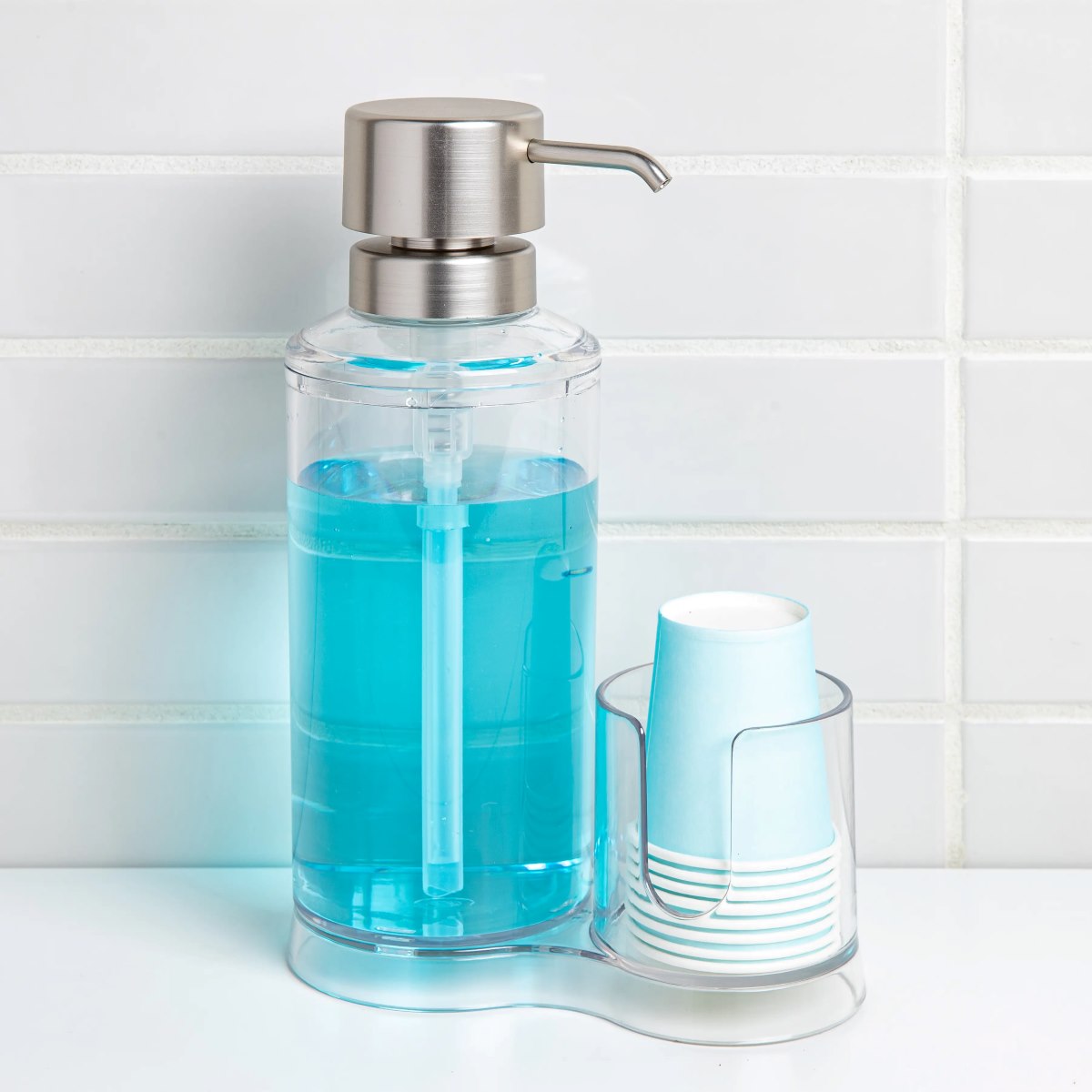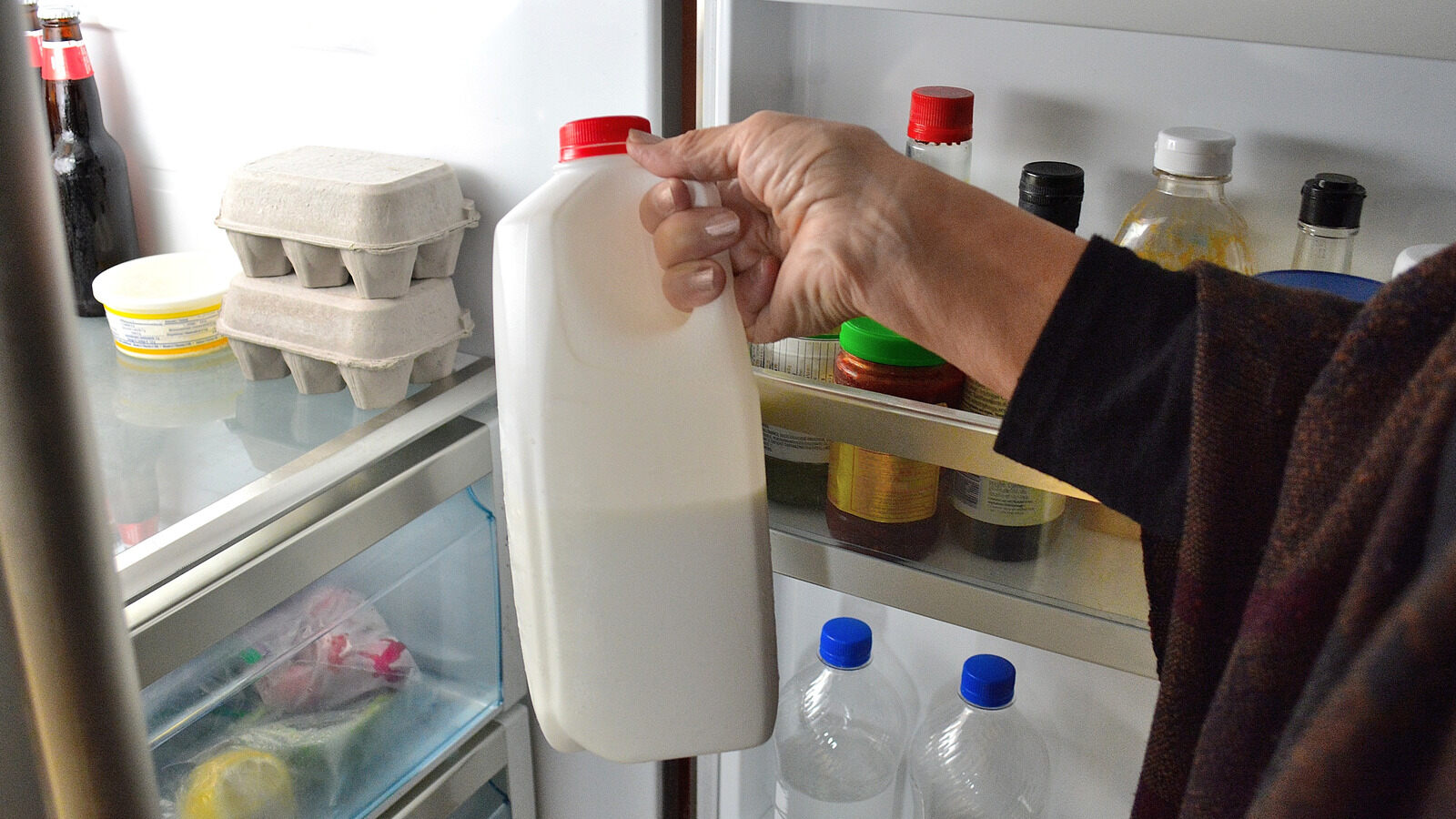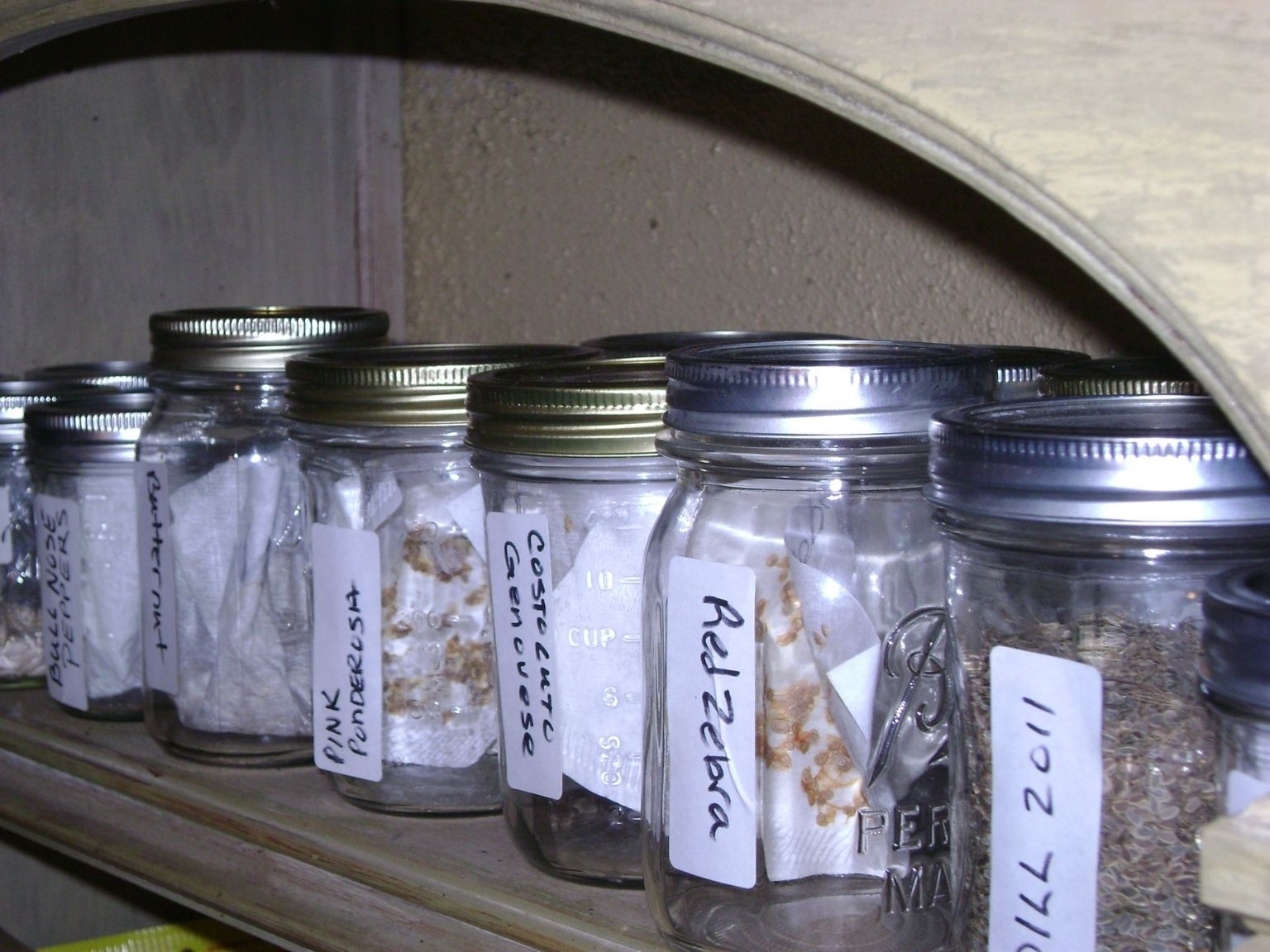

Articles
How To Store Canvases
Modified: January 5, 2024
Learn the best way to store canvases with these helpful articles. Keep your artwork safe and protected for years to come.
(Many of the links in this article redirect to a specific reviewed product. Your purchase of these products through affiliate links helps to generate commission for Storables.com, at no extra cost. Learn more)
Introduction
As an artist or art enthusiast, you understand the importance of proper care and preservation of your beloved canvases. Whether you’re a professional artist with a collection of valuable artworks or a hobbyist with a few cherished pieces, it’s essential to know how to store your canvases correctly to ensure their longevity and maintain their pristine condition.
In this article, we will discuss the best practices for storing canvases, from choosing the right storage space to protecting them from damage and maintaining their quality over time. By following these guidelines, you can keep your canvases safe, organized, and ready for display or future use.
Proper canvas storage not only prevents physical damage like scratches, dents, or tears but also protects against environmental elements such as moisture, humidity, and temperature fluctuations. By taking the necessary precautions, you can preserve the quality and integrity of your artwork, allowing it to be appreciated for generations to come.
So, let’s dive into the world of canvas storage and discover the tips and techniques that will ensure the longevity of your artwork.
Key Takeaways:
- Proper storage and maintenance of canvases is crucial for preserving their quality and longevity. Choose the right storage space, prepare canvases carefully, and protect them from damage to ensure their continued beauty and significance.
- Storing canvases flat, using sturdy racks or shelves, and avoiding humidity and temperature fluctuations are essential practices for preserving artwork. Regular maintenance, inspection, and organization further contribute to the long-term protection of canvases.
Read more: How To Store Art Canvases
Storing Canvases: Best Practices
When it comes to storing canvases, there are several best practices to keep in mind to protect your artwork from damage and deterioration. Here are some key considerations to follow:
- Choose the Right Storage Space: Start by selecting a suitable area for storing your canvases. Ideally, this space should be clean, dry, and free from direct sunlight, extreme temperatures, and humidity. A cool and dark room, basement, or storage unit with climate control is often the best option.
- Prepare Canvases for Storage: Before storing your canvases, ensure they are clean and free from dust, dirt, or any other debris. Use a soft brush or microfiber cloth to gently remove any surface dirt. Avoid using cleaning solutions or water as they can damage the canvas.
- Store Canvases Flat: Storing canvases horizontally is the preferred method to prevent sagging or warping. Lay them flat on acid-free boards or foam boards, ensuring that the surface is smooth and even. Place a layer of acid-free tissue paper or unbleached cotton fabric between each canvas to prevent them from sticking or scratching against each other.
- Consider Racks or Shelves: If you have limited space, consider using racks or shelves specifically designed for canvas storage. These allow you to store multiple canvases vertically without compromising their integrity. Make sure the racks or shelves are sturdy, well-supported, and provide adequate space between each canvas to avoid any accidental damage.
- Protect Canvases from Damage: It’s crucial to protect canvases from physical damage during storage. Avoid placing heavy objects on top of them or stacking them too high, as this can cause unnecessary pressure and result in dents or deformations. You may also consider using acid-free archival boxes or sleeves to provide an additional layer of protection.
- Avoid Humidity and Temperature Fluctuations: Fluctuations in humidity and temperature can cause irreversible damage to canvases. High humidity can lead to mold growth and warping, while extreme temperatures can cause the canvas to expand or contract. To mitigate these risks, monitor the climate of your storage space and use dehumidifiers, humidifiers, or air conditioners to maintain stable conditions if necessary.
- Organize and Label Canvases: Proper organization is essential when storing multiple canvases. Assigning a unique identifier or label to each canvas can help you easily locate and retrieve them when needed. Consider creating an inventory list or digital catalog of your stored artworks for better organization and tracking.
- Regular Maintenance and Inspection: It’s important to regularly check your stored canvases for any signs of damage, mold, or pests. Inspect them at least once every few months and address any issues immediately. If you notice any changes or potential problems, consult a professional conservator or restorer for advice on the best course of action.
By following these best practices, you can ensure that your stored canvases remain in optimal condition, preserving their beauty and value for years to come.
Choosing the Right Storage Space
When it comes to storing your valuable canvases, one of the most crucial factors to consider is selecting the right storage space. The environment in which your artwork is stored plays a significant role in its preservation and longevity. Here are some considerations to keep in mind when choosing a storage space:
Climate Control: Ideally, the storage space should have climate control features to regulate temperature and humidity levels. Fluctuations in these factors can cause irreversible damage to your canvases, such as warping, mold growth, or paint cracking. Maintaining stable conditions with temperature range between 65°F and 75°F (18°C to 24°C) and relative humidity between 40% and 60% is recommended.
Protection from Light: Exposure to direct sunlight or strong artificial light can cause fading and discoloration of the canvas and paint pigments over time. Choose a storage space that is shielded from natural and artificial light sources. If windows are present, consider covering them with UV-filtering window films or curtains.
Security: Ensure that the storage space has proper security measures in place to protect your artwork from theft or unauthorized access. Look for facilities or rooms with secure locks, surveillance cameras, and alarm systems. If storing at home, consider using a locked room or cabinet.
Cleanliness: The storage space should be clean, free from dust, dirt, and pests. Avoid storing canvases in areas prone to insects or rodents. Regular cleaning and maintenance of the storage area can help prevent any potential damage to your artwork.
Avoid Basements and Attics: While basements and attics are commonly used for storage, they may not be ideal for storing canvases. Basements can be prone to dampness and humidity, leading to mold growth, while attics tend to experience extreme temperature fluctuations. If using these areas, consider investing in dehumidifiers or insulation to maintain stable climate conditions.
Consider Professional Storage Facilities: If you don’t have a suitable storage space at home or are concerned about the conditions, professional storage facilities specializing in art storage may be a viable option. These facilities typically offer climate-controlled environments, security measures, and specialized art storage equipment.
Remember, the storage space you choose should provide optimal conditions for your canvases, protecting them from environmental factors that can cause deterioration and damage. By selecting the right space, you are taking a significant step towards preserving the quality and longevity of your artwork.
Preparing Canvases for Storage
Before you store your canvases, it’s important to properly prepare them to ensure their protection and longevity. Taking the time to prepare your canvases will help prevent damage and make the retrieval process smoother in the future. Here are some essential steps to follow when preparing your canvases for storage:
- Clean the Canvases: Begin by gently cleaning the surfaces of your canvases. Use a soft brush or microfiber cloth to remove any dust, dirt, or debris. Avoid using water or cleaning solutions, as they can potentially damage the canvas or paint.
- Inspect for Damage: Take a close look at each canvas for any signs of damage, such as scratches, tears, or loose paint. It’s crucial to address any issues before storing them to prevent further deterioration. If you notice any damage, consider consulting a professional conservator for proper repair and restoration.
- Remove Loose or Fragile Elements: If your canvas has any loose elements, such as flaking paint or detached embellishments, carefully remove them. These fragile pieces can get damaged during storage and may cause additional harm to the artwork.
- Protect with Barrier Layers: To provide an additional layer of protection, consider using acid-free tissue paper or unbleached cotton fabric. Place a sheet of the barrier material between each canvas to prevent them from sticking together or scratching against one another. You can also place a barrier layer over the top of the stacked canvases before covering them with a protective cloth or plastic wrap.
- Avoid Plastic Wrap: While plastic wrap may seem like a convenient option for protecting your canvases, it can potentially trap moisture and lead to mold growth. If you choose to use plastic wrap, ensure that the canvases are adequately ventilated to prevent any moisture buildup.
- Label Each Canvas: Before storing your canvases, label each one with a unique identifier or description. This will help you easily identify and retrieve specific artworks in the future.
- Take Reference Photos: It’s a good idea to take reference photos of your canvases before storage. These photos can serve as documentation and help you remember the condition of each artwork. It could also be helpful for insurance purposes.
By properly preparing your canvases for storage, you are taking proactive steps to protect them from potential damage and ensure their long-term preservation. With a little care and attention, you can store your canvases with confidence, knowing they will be in excellent condition when you’re ready to retrieve and enjoy them again.
Storing Canvases Flat
One of the most recommended methods for storing canvases is laying them flat. Storing canvases flat helps prevent any warping, sagging, or damage that may occur when storing them vertically or leaning them against a wall. Here are some key steps to follow when storing your canvases flat:
- Choose a Suitable Surface: Select a clean, stable, and flat surface to store your canvases. Acid-free boards or foam boards are commonly used as supportive surfaces. Avoid storing canvases directly on the floor, as it can expose them to potential damage, such as moisture, pests, or accidental kicks.
- Prepare the Supportive Surface: Lay the acid-free boards or foam boards on the chosen surface. Ensure that they are clean and free from any debris that may scratch the canvas. Lay a clean sheet of acid-free tissue paper or unbleached cotton fabric over the supportive surface to provide a protective barrier for the canvas.
- Place the Canvases: Carefully place each canvas on the prepared surface, ensuring that they lie flat and do not overlap. Leave enough space between each canvas to prevent any accidental damage. If you have different-sized canvases, arrange them in order of size or label them for easy identification.
- Use Barrier Layers: To prevent canvases from sticking together or scratching against one another, place a layer of acid-free tissue paper or unbleached cotton fabric between each canvas. This barrier layer ensures that the canvases remain protected and eliminates the risk of any surface damage during storage.
- Cover the Canvases: Once the canvases are placed on the supportive surface and separated by barrier layers, cover them with a clean sheet of acid-free tissue paper or unbleached cotton fabric. This additional layer will protect the canvases from dust, dirt, and light exposure.
- Avoid Heavy Stacking: Avoid stacking too many canvases on top of each other, as excessive weight can lead to unnecessary pressure, dents, or deformations. If additional storage space is required, consider using a rack or shelf specifically designed for canvas storage.
- Regularly Inspect and Maintain: It’s important to regularly check your stored canvases for any signs of damage, mold growth, or pests. Inspect them every few months and address any issues immediately. Maintain a clean storage area and ensure that the canvases remain flat and undisturbed.
By storing your canvases flat, you are minimizing the risk of damage and maintaining their original shape and structural integrity. This method is particularly beneficial for larger or stretched canvases, as it provides optimal support and prevents any stress on the frame or corners. Follow these steps to ensure that your stored canvases remain safe, protected, and ready for future display or use.
Read more: How To Store Painted Canvases
Storing Canvases on Racks or Shelves
If you have limited space or a large collection of canvases, storing them on racks or shelves can be a practical and efficient solution. This method allows you to store canvases vertically without compromising their integrity. Here are some guidelines to follow when storing canvases on racks or shelves:
- Select Sturdy Racks or Shelves: Choose racks or shelves that are specifically designed for canvas storage. Opt for ones made of sturdy materials, such as metal or solid wood, to ensure they can support the weight of your canvases without bending or collapsing.
- Ensure Adequate Support: Before placing your canvases on the racks or shelves, make sure that they provide adequate support. Horizontal support bars or adjustable dividers can be used to create compartments for each canvas, preventing them from leaning or touching each other.
- Prepare the Canvases: Clean the canvases and inspect them for any signs of damage before placing them on the racks or shelves. Use a soft brush or microfiber cloth to remove any dust or dirt. If there are loose elements like flaking paint or detached embellishments, handle them with care or consider removing them altogether to prevent any further damage.
- Arrange Canvases by Size: Organize your canvases on the racks or shelves by size. Place larger canvases at the bottom and smaller ones on top. This arrangement helps distribute the weight evenly and prevents any toppling or instability.
- Leave Enough Space: Make sure to leave some space between each canvas to avoid any accidental damage when retrieving or moving them. The space between canvases should be sufficient to prevent them from touching or rubbing against each other.
- Protect with Barrier Layers: To provide an additional layer of protection, consider placing a sheet of acid-free tissue paper or unbleached cotton fabric between each canvas. This barrier layer helps prevent sticking, scratching, or transfer of any residues between the canvases.
- Cover for Dust Protection: Depending on the environment, consider covering the racks or shelves with a clean sheet or cloth to protect the canvases from dust and dirt. Ensure that the cover is breathable to allow for proper air circulation.
- Regularly Inspect and Maintain: It’s important to periodically inspect your stored canvases for any signs of damage, pests, or mold growth. Regular maintenance and cleaning of the racks or shelves will also help ensure the longevity and quality of your canvas collection.
Storing canvases on racks or shelves offers an organized and space-efficient solution, allowing easy access to your artwork while keeping them protected. By following these guidelines, you can store your canvases vertically without compromising their integrity and ensure they remain in excellent condition for years to come.
Store canvases vertically to prevent warping. Use acid-free paper or plastic wrap to protect the surface. Keep them in a cool, dry place away from direct sunlight.
Protecting Canvases from Damage
Protecting your canvases from damage is key to preserving their quality and ensuring their longevity. While storing them properly is important, there are additional precautions you can take to safeguard your artwork from potential harm. Here are some essential steps to protect your canvases from damage:
- Avoid Exposure to Sunlight: Direct sunlight can cause fading and discoloration of the canvas and paint pigments over time. Keep your canvases away from windows or areas with excessive sunlight. If display is necessary, use UV-filtering glass or acrylic to protect them from harmful ultraviolet (UV) rays.
- Handle with Clean Hands: Before touching your canvases, make sure your hands are clean and free from any oils, lotions, or dirt. Handling canvases with dirty hands can transfer residues onto the surface, leading to potential staining or damage. If needed, wear cotton gloves to minimize contact with the canvas.
- Avoid Excessive Touching: Limit the amount of direct contact with your canvases, as repeated touching can cause wear and tear over time. When handling your artwork, support the canvas from the back or the edges rather than pressing directly on the painted surface.
- Protect from Physical Impact: Take precautions to prevent accidental bumps or knocks to your canvases. Avoid placing heavy objects on top of them, leaning them against rough surfaces, or stacking them too high. Store them in a secure location where they won’t be accidentally moved or knocked over.
- Protect from Moisture and Humidity: Excessive moisture and high humidity can lead to mold growth, warping, and deterioration of the canvas and paint. Avoid storing canvases in areas prone to dampness, such as basements or attics. Use dehumidifiers or moisture-absorbing products to maintain a dry environment in your storage space.
- Avoid Extreme Temperatures: Fluctuations in temperature can cause the canvas to expand or contract, leading to cracks or warping. Avoid storing canvases in areas with extreme heat or cold, such as near radiators or air conditioning units. Maintain a stable temperature range to protect your artwork.
- Protect from Pests: Take precautions to prevent pests, such as insects or rodents, from causing damage to your canvases. Ensure your storage area is clean and free from food sources that may attract pests. Consider using pest control methods, such as traps or repellents, to protect your artwork.
- Regular Cleaning and Inspection: Regularly clean your storage area to prevent dust or dirt buildup. Additionally, inspect your canvases periodically for any signs of damage, pests, or mold growth. Be on the lookout for changes in the appearance or condition of your artwork.
By following these measures, you can significantly reduce the risk of damage to your canvases and ensure they remain in pristine condition. Protecting your artwork from potential harm allows you to continue enjoying and showcasing your collection for years to come.
Avoiding Humidity and Temperature Fluctuations
Humidity and temperature fluctuations can have detrimental effects on your canvases, leading to warping, mold growth, paint cracking, and other forms of damage. It is crucial to maintain a stable climate in your storage area to protect your artwork. Here are some measures you can take to avoid humidity and temperature fluctuations:
- Choose a Climate-Controlled Storage Area: Select a storage space that has climate control features, such as air conditioning, heating, or dehumidifiers. These systems help regulate both temperature and humidity levels, creating a stable environment for your canvases.
- Monitor the Room Conditions: Use a hygrometer and thermometer to regularly monitor the humidity and temperature levels in your storage area. Keep the humidity between 40% and 60% and the temperature within a range of 65°F to 75°F (18°C to 24°C).
- Eliminate Moisture Sources: Identify and eliminate any potential sources of moisture in your storage area. Repair any leaks or water issues, ensure proper ventilation, and avoid storing canvases near areas prone to moisture, such as bathrooms or basements.
- Use Moisture Absorbers: Place moisture-absorbing products, such as silica gel packets or dehumidifiers, in your storage space. These help remove excess moisture from the air, reducing the risk of mold growth and minimizing fluctuations in humidity levels.
- Avoid Extreme Temperature Changes: Rapid or extreme temperature changes can cause the canvas to expand or contract, leading to potential damage. Avoid placing your canvases near sources of heat or cold, such as radiators, air conditioning units, or windows.
- Avoid Drafts: Direct drafts of air can create temperature fluctuations and contribute to changes in humidity levels. Ensure that your storage area is sealed properly to minimize drafts from entering the space.
- Insulate the Storage Area: Insulate your storage area to help maintain a more stable climate. This can involve adding insulation to walls, windows, or doors, which helps regulate temperature and prevent moisture from entering the space.
- Allow for Air Circulation: While sealing the storage area is important, it’s also crucial to allow for proper air circulation. Good ventilation helps control humidity levels and prevents the buildup of stagnant air, which can contribute to mold growth.
- Limit Access to the Storage Area: Minimize the frequency of doors or windows being opened in the storage area. Each time the door or window is opened, it can introduce changes in temperature and humidity, disrupting the stability of the environment.
- Maintain Regular Maintenance: Regularly check and maintain the climate control systems in your storage area. Clean or replace filters, ensure proper functioning, and address any issues promptly to maintain a consistent climate for your canvases.
By taking measures to avoid humidity and temperature fluctuations, you can significantly reduce the risks of damage to your canvases. Maintaining a stable climate in your storage area will preserve the integrity of your artwork, ensuring it remains in excellent condition over time.
Organizing and Labeling Canvases
Organizing and labeling your canvases is essential for easy retrieval, inventory management, and maintaining an orderly storage system. Proper organization ensures that you can quickly locate specific artworks when needed and helps prevent any accidental damage while handling your collection. Here are some tips for organizing and labeling your canvases:
- Create an Inventory System: Establishing an inventory system can streamline the organization of your canvases. You can create a spreadsheet or use inventory management software to keep track of each artwork’s details, such as title, size, creation date, and any specific notes.
- Assign Unique Identifiers: Give each canvas a unique identifier or number. This can be a combination of letters, numbers, or a specific code system that you create. The unique identifier makes it easier to track and locate specific artworks in your inventory.
- Label Canvases: Attach a label to each canvas with its corresponding unique identifier. Ensure that the label is securely attached to the back of the canvas or on the stretcher bars to avoid any damage to the artwork. Consider using acid-free and archival-grade labels or tags to prevent any potential harm over time.
- Categorize and Group: Group your canvases based on meaningful categories, such as subject matter, series, medium, or chronological order. This categorization can make it easier to locate specific artworks and provide a systematic organization for your collection.
- Utilize Shelving or Storage Units: If you have multiple canvases, consider using shelving or storage units to further organize your collection. Assign specific shelves or compartments for different categories or sizes of canvases, ensuring that you have enough space to store each artwork without overcrowding.
- Create Visual Documentation: Besides labeling, consider taking photographs of each canvas to create visual documentation. This can serve as a visual reference for your inventory and aid in identifying an artwork even if the label becomes detached or unreadable.
- Include Artwork Information: Alongside the unique identifier, consider including important information about each artwork, such as the artist’s name, creation date, medium, and any relevant details. This additional information provides context and helps maintain accurate records of your collection.
- Maintain Consistent Updating: Keep your inventory system and labeling process up to date regularly. If you add new artworks or make changes to your collection, update the inventory and labels accordingly. This practice ensures that your organization remains accurate and reflects the current state of your collection.
- Keep a Digital Backup: To further enhance organization and accessibility, keep a digital backup of your inventory. Store digital images of each artwork, including their unique identifiers and relevant details, on a secure and accessible platform. This digital backup can serve as an additional reference and backup in case of any physical documentation loss or damage.
By organizing and labeling your canvases effectively, you will maximize efficiency when retrieving and managing your collection. These simple steps contribute to maintaining the integrity of your artworks and ensuring a well-organized and easily navigable storage system.
Read more: How To Store Store-Bought Bread
Regular Maintenance and Inspection
Regular maintenance and inspection of your stored canvases are essential to catch any potential issues early on and ensure their long-term preservation. By implementing a routine maintenance schedule, you can proactively address any concerns and maintain the quality of your artworks. Here are some guidelines for regular maintenance and inspection:
- Establish a Schedule: Set a regular schedule for inspecting your stored canvases. This can be monthly, quarterly, or semi-annually, depending on the size of your collection and the conditions of your storage area.
- Examine for Damage: During each inspection, carefully examine each canvas for any signs of damage, such as scratches, tears, or loose paint. Pay attention to the corners, edges, and the overall condition of the canvas surface. Promptly address any issues to prevent further deterioration.
- Check for Mold and Pest Infestation: Look for any signs of mold growth or insect infestation. Inspect both the front and back of your canvases, as well as the storage area itself. If you notice any signs of mold or pests, consult a professional conservator for appropriate remediation or treatment.
- Monitor Environmental Conditions: Check the temperature and humidity levels in your storage area during each inspection. Ensure that they remain within the desired range discussed earlier. If there are fluctuations, take corrective measures to maintain stable conditions.
- Adjust Storage Arrangements if Necessary: Assess whether the current storage arrangements are still suitable for your collection. If you find any canvases that are leaning, touching each other, or placed under excessive pressure, reorganize them to ensure proper support and spacing.
- Clean the Storage Area: Regularly clean and dust the storage area to maintain a clean environment. Remove any debris or dirt that may accumulate over time. Cleaning the storage area helps prevent dust and foreign particles from settling on the canvases.
- Update Inventory Records: Take the opportunity during inspections to update your inventory records. Note any changes in the physical condition of the canvases or any new additions to your collection. Keeping accurate and up-to-date records is essential for proper management and tracking of your stored artworks.
- Consult a Professional If Needed: If you notice any significant damage or are unsure about the best course of action for a particular issue, consider consulting a professional conservator or restorer. They can provide guidance on the appropriate steps to take to restore or repair your canvases.
Regular maintenance and inspection of your stored canvases allow you to proactively address any issues and ensure the long-term preservation of your collection. By staying vigilant and taking appropriate action when needed, you can extend the lifespan of your canvases and continue to enjoy their beauty and significance.
Conclusion
Properly storing and maintaining your canvases is crucial to preserving their quality, integrity, and longevity. By following the best practices outlined in this article, you can ensure that your artwork remains protected and ready for display or future use. Here are the key takeaways:
First and foremost, choose the right storage space that provides climate control, protection from sunlight, security, and cleanliness. Create an environment that safeguards your canvases from humidity, temperature fluctuations, and potential damage.
Before storing your canvases, take the time to prepare them by gently cleaning the surfaces, inspecting for any damage, and removing any loose or fragile elements. Use acid-free barrier layers to protect the canvases from sticking or scratching against each other.
Consider storing your canvases flat on supportive surfaces, such as acid-free boards or foam boards, to prevent warping and sagging. If you opt to store them vertically, use sturdy racks or shelves with adequate support and spacing between canvases.
Protecting your canvases from damage involves avoiding exposure to sunlight, handling them with clean hands, and protecting them from physical impact and moisture. Regular maintenance and inspections are crucial to catch any issues early on and maintain the overall condition of your canvases.
Lastly, organize and label your canvases using a unique identifier system, categorize them, and create an inventory to easily locate and manage your collection. Regularly update your records and consider keeping a digital backup of your inventory for added convenience.
By implementing these practices, you can cherish your canvases for years to come, safe in the knowledge that they are stored and maintained with care. Remember, each canvas is a work of art deserving of proper preservation. So, protect them diligently, and they will continue to inspire and delight for generations.
Frequently Asked Questions about How To Store Canvases
Was this page helpful?
At Storables.com, we guarantee accurate and reliable information. Our content, validated by Expert Board Contributors, is crafted following stringent Editorial Policies. We're committed to providing you with well-researched, expert-backed insights for all your informational needs.














0 thoughts on “How To Store Canvases”